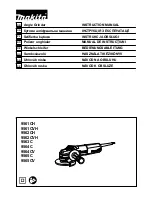
3
A few tips to ensure success
1. We are very pleased with the level of craftsmanship displayed by the builders in our factory.
Through hundreds of grueling test flights containing maneuvers that no aircraft should be
subjected to, our prototypes have remained rigid and completely airworthy. However, it is
impossible for us to inspect every glue joint in the aircraft. Take a few minutes and apply some
medium CA to high stress areas such as servo mounting trays , landing gear blocks, anti rotation
pins, etc.
2. Having survived the journey half way around the world while experiencing several climate changes,
it is not uncommon for a few wrinkles to develop in the covering. Fear not! These are not
manufacturing defects, and are easily removed with a little bit of heat. Use a 100% cotton tee-shirt
and your heat gun and heat the covering while gently rubbing the covering onto the wood with the
t-shirt. Be careful not to use too much heat as the covering may shrink too much and begin to lift
at the edges. Take your time, and a beautiful, paint like finish is attainable.
3. By the time your aircraft arrives at your door step it will have been handled by a lot of people.
Occasionally there are small dings or imperfections on some of the surfaces. An effective method
to restore these imperfections to original condition is to use a very fine tipped hypodermic needle
to inject a drop of water under the covering material and into the ding in the wood. Apply heat to
the area with a sealing iron and the imperfection will disappear. Deeper marks may require that
this process be repeated a couple of times to achieve the desired result, but you will be surprised at
how well this technique works.
4. DO NOT SKIMP ON SERVOS! Your aircraft is equipped with very large control surfaces that
deflect over 45 degrees. A lot of servo power is required to prevent flutter and to maintain the
required deflection for maneuvers. We absolutely recommend the use of METAL GEARED
servos with a minimum of 250 oz. in of torque.
5. Use a high quality epoxy for installing the composite control horns and hinges. We highly
recommend the use of Pacer Z-Poxy 30 minute formula. We have used this glue for many years
with zero failures. Recently we have been experimenting with Pacer Hinge Glue and are very
pleased with the results and ease of application and clean up.
6. You may want to add a bead of silicone glue (Pacer Zap-A-DAP-A-GOO, etc.) or RC-56 Canopy
glue to the intersection of the plastic canopy/hatch and its wood frame for additional strength and
resistance to vibration. DO NOT USE CA here as it will fog the canopy.
7. Your aircraft is built using very modern construction techniques and is very light weight for its
size. As with any high performance machine, regular inspection and maintenance is a must.
While disassembling your aircraft after a flying session, pay close attention and inspect glue joints,
linkages and loose covering to be sure the airframe is sound. A few minutes spent doing this will
help maintain airframe longevity.
8. Be sure to put a drop of blue Loctite thread locker on every bolt on this aircraft! Failure to do so
may cost you your aircraft!




































